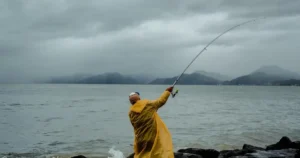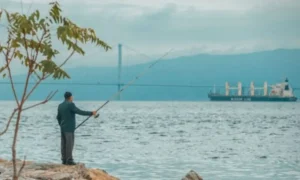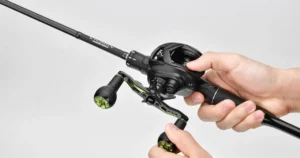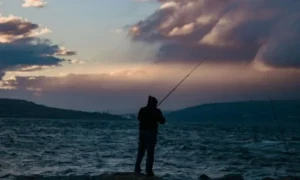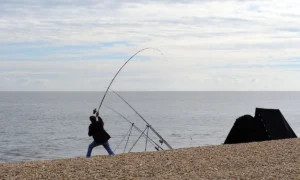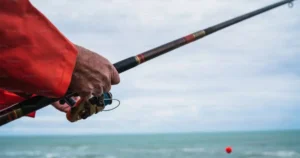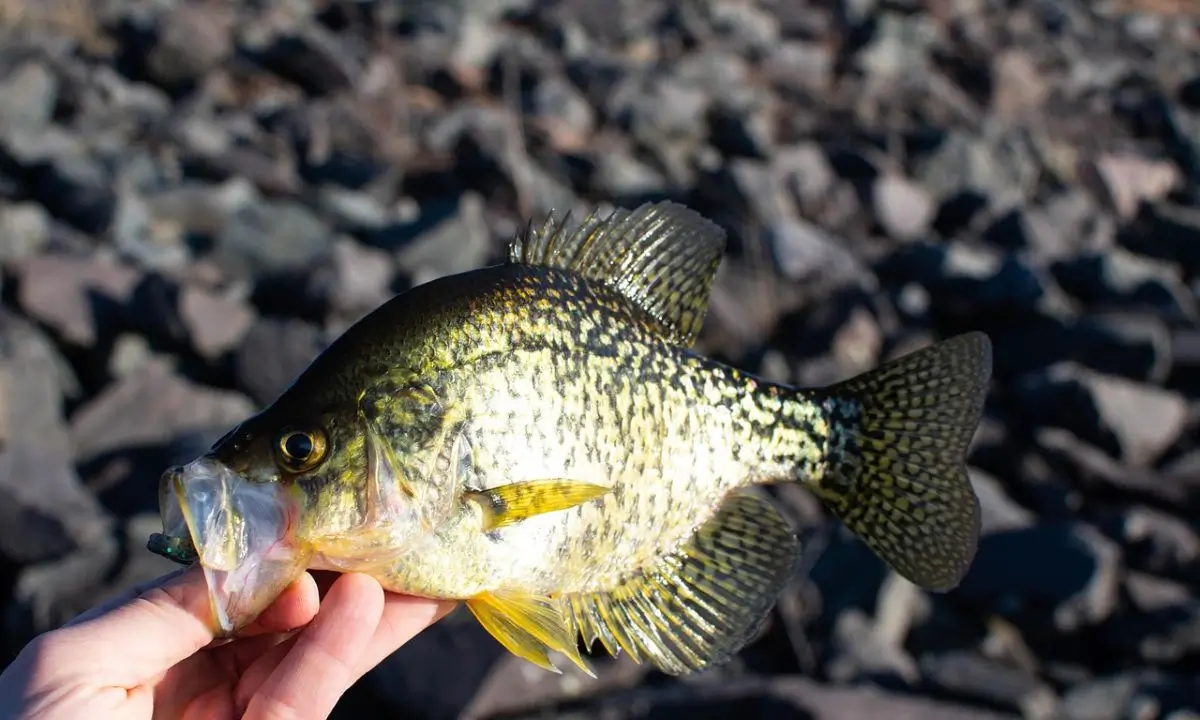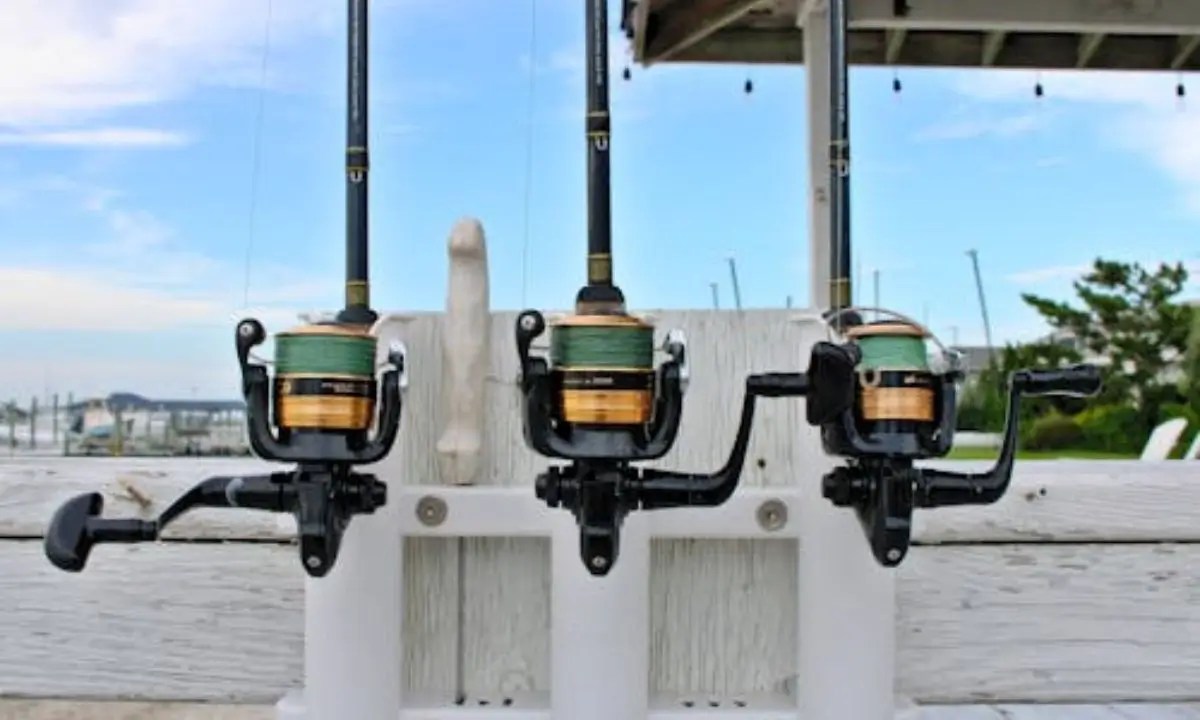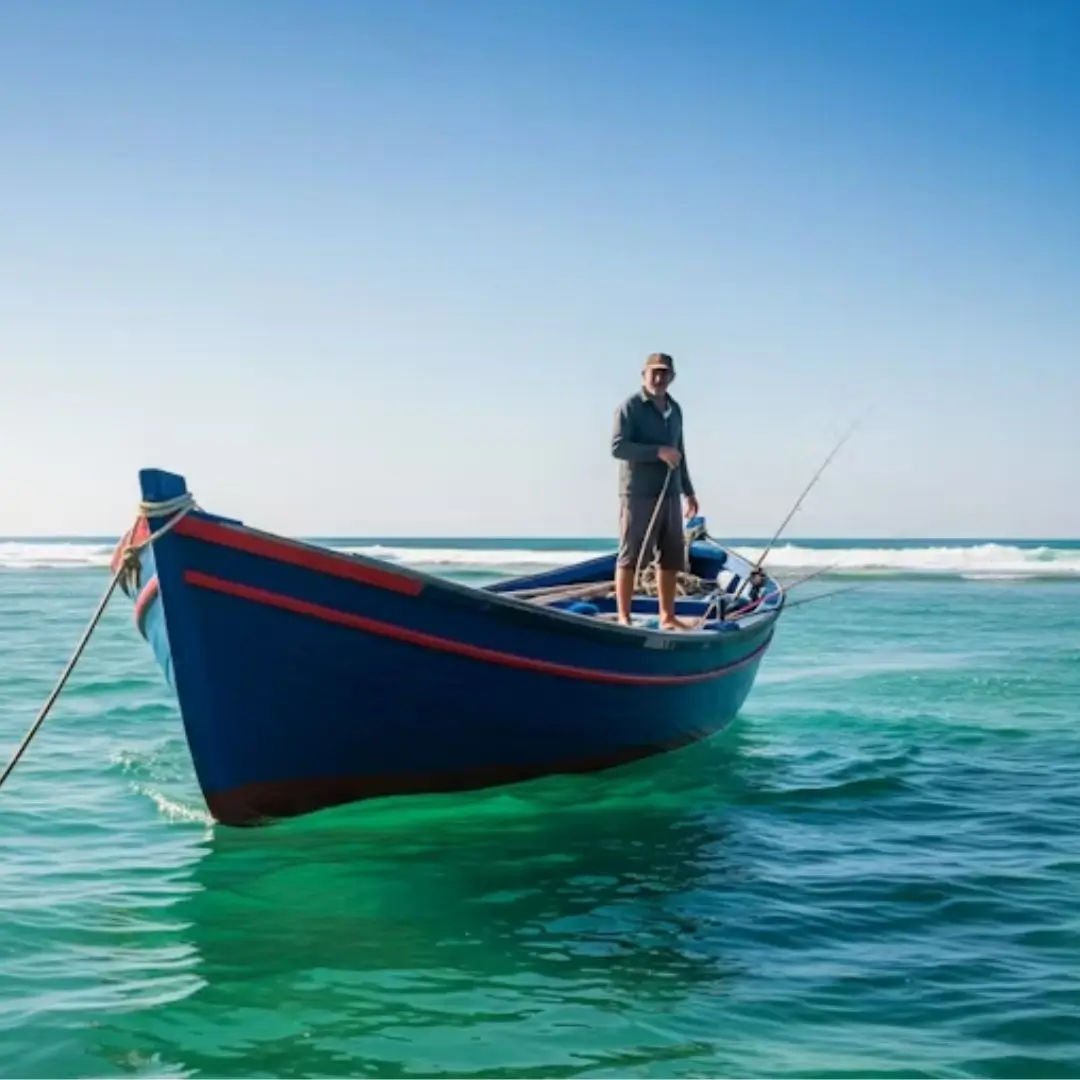To cast a fishing rod far, use a longer rod (7–10 feet), the right reel and line, and focus on timing and smooth technique. A proper stance, correct lure weight, and practicing release angle can greatly increase casting distance.
📌 Introduction
Learning how to cast a fishing rod far is one of the most important skills for any angler. Whether you are fishing in a lake, along the surf, or in a river, casting distance can make the difference between reaching active fish or missing the strike zone completely. Longer casts allow you to cover more water, keep your lure in the strike zone longer, and avoid spooking fish near the shore.
Many beginners struggle with casting because their line falls short, or they experience tangles and backlash that limit their reach. These issues often come from using the wrong rod length, poor timing, or incorrect reel settings. The good news is that with the right gear setup and simple adjustments to your technique, you can greatly improve your distance.
In this guide, we’ll cover everything from choosing the best rod and reel to using proven casting methods. Whether you’re new to fishing or looking to refine your skills, you’ll learn step-by-step strategies to cast farther and fish more effectively. More details fishing rod tips
Why Casting Distance Matters:
When you’re trying to reach distant fish-holding spots, casting farther gives you access to more water, deeper areas, and less-pressured fish. Especially in surf fishing, lake fishing, or when using live bait, being able to cast a fishing line far can make all the difference.
In my early days, I remember watching experienced anglers cast way beyond where I could reach. I’d catch fewer fish until I learned how to improve my casting distance. The difference was night and day.
📌 Factors That Affect Casting Distance :
When learning how to cast a fishing rod far, understanding the key factors that affect distance is essential. The first factor is rod length. Longer rods, typically 7–10 feet, allow for a wider arc during casting, which increases line speed and distance. Shorter rods may offer more control but limit your reach.
Next, the reel type plays a crucial role. Spinning reels are beginner-friendly and ideal for long casts with light lines, while baitcasting reels provide more precision and control but require practice to avoid backlash.
The fishing line is another important factor. Braided lines are thin and have less air resistance, allowing for longer casts. Monofilament lines stretch more and can reduce casting distance, while fluorocarbon lines offer low visibility but slightly more resistance.
Finally, lure or bait weight affects momentum. Heavier lures travel farther, but your rod and line must support the weight. Using too heavy or too light a lure can reduce distance and accuracy.
By adjusting rod length, reel choice, line type, and lure weight, you can maximize your casting distance and fish more effectively in lakes, rivers, or surf. Detailed description fishing rod holder
Choose the Right Gear:
1: Use the Right Rod Your rod plays a huge role. For long-distance casts, choose: Using a 7–10 foot rod gives you better leverage, making it easier to cast farther with less effort. A fast action rod for better energy transfer.
2. Select a Good Reel For most beginners, a spinning reel is easier to learn and great for distance casting. If you’re experienced, a bait caster can offer more control and accuracy. Learning how to cast farther with a spinning reel starts with choosing the right model.
3: Choose an Efficient Fishing Lingo with a low-diameter braided line (around 15–30 lb.) This helps reduce friction and air resistance
Make sure the line is compatible with your rod and reel.
4: Pick the Right Weight Casting far requires the right weight: A lure or sinker that matches your rod’s casting rating Use aerodynamic weights or streamlined lures.
Proper Casting Technique
Mastering how to cast a fishing rod far requires proper technique combined with the right gear. Start by holding the rod at a comfortable angle, typically 45 degrees to the water. Grip the rod handle firmly but avoid tension in your wrist, as a relaxed motion helps generate smoother, longer casts.
Begin the cast by bringing the rod tip back behind you, creating a smooth loading motion. Then, in one fluid movement, flick the rod forward while releasing the line at the right moment. Timing is key—releasing too early or late can drastically reduce distance and accuracy.
For spinning reels, open the bail before the forward cast and close it after the line lands in the water. For baitcasting reels, thumb control on the spool is crucial to prevent backlash while maximizing distance.
Adjusting your stance also helps. Keep feet shoulder-width apart and use your body rotation to add power to the cast instead of relying solely on your arms. Practice short casts first, then gradually increase distance as your technique improves. In detail Fly Fishing on a Spinning Rod
By combining proper rod angle, fluid motion, and body rotation, even beginners can learn how to cast a fishing rod far more efficiently, improving both accuracy and distance for lakes, rivers, or surf fishing.
Step-by-Step Guide: How to Cast Farther
Learning how to cast a fishing rod far effectively involves following a simple step-by-step method that combines proper grip, stance, and timing. Start by holding the rod with a firm but relaxed grip, ensuring your wrist remains flexible. This allows smoother motion and better control during the cast.
Next, position your body with feet shoulder-width apart, aligning your shoulders toward the target. A correct stance helps transfer power from your torso, not just your arms, increasing casting distance.
When swinging the rod, bring it back smoothly and then accelerate forward in a controlled motion. Timing the line release is crucial: let go at the peak of your forward swing to achieve maximum distance and accuracy. Avoid jerky or rushed movements, as these reduce efficiency.
After releasing, follow through by extending the rod forward naturally. This ensures a smooth trajectory and reduces line tangles. Practicing this motion consistently improves both distance and precision, whether you are fishing in a lake, river, or surf.
By combining proper grip, body alignment, swing technique, release timing, and follow-through, anglers of all levels can master how to cast a fishing rod far, making every cast more effective and enjoyable.
Advanced Casting Techniques
For experienced anglers looking to master how to cast a fishing rod far, advanced techniques can add significant distance and accuracy. One popular method is the pendulum cast, where the lure swings side-to-side before release, generating extra momentum for longer casts.
Another effective approach is the off-the-ground cast, lifting the rod higher before the forward swing. This technique increases line travel and helps the lure fly farther.
Using two hands on heavier rods can also improve casting distance by providing extra power and control, especially for long-distance lake or surf fishing.
By practicing these advanced methods along with proper timing and follow-through, pros can achieve maximum casting range while maintaining accuracy. Combining these techniques ensures every cast covers more water, increasing the chances of landing more fish efficiently. More information Storing Fishing Rods
Experience Tip:
When I switched to a 20 lb braid and a torpedo-style sinker, my casts went about 30 feet farther. Little gear changes matter!
Perfect Your Casting Technique :
1: Focus on Timing When learning how to cast for fishing, timing is everything. The rod should load properly before releasing the line.
2: Use a Smooth Motion Don’t try to muscle it. Instead, use a smooth backswing and let the rod do the work. Practice the two-handed overhead cast—it’s great for distance.
3: Optimize Your Release Point Releasing the line too early or too late affects distance. The sweet spot is typically around the 10 o’clock position.
4: Practice with a Spinning Relief you want to know how to cast farther with a spinning reel, here are some tips: Make sure the spool is full
Use your index finger to release the line cleanly Avoid line twist by using quality swivels.
Real Experience Tip:
The first time I focused on release timing instead of power, my casting distance improved by almost 20%. I was shocked how much technique matters. Environmental Factors to Considering direction: Casting with the wind can give you extra distance.
Casting angle :
A low trajectory can cut through wind better Line condition: A clean, dry line casts better than one with salt or debris. details Top Grease for Fishing Reels
Pro Tips for Long Casting
Mastering how to cast a fishing rod far requires practice, patience, and the right techniques. Start by practicing in an open field to get comfortable with your rod and reel without worrying about obstacles. Adjusting your drag settings can also make a big difference, ensuring smooth line release during longer casts.
Using a lighter fishing line reduces air resistance, allowing your lure to travel farther with less effort. Remember, smooth, controlled motion always outperforms brute force—rushing or flailing your cast often shortens distance and increases line tangles.
By focusing on these simple pro tips, you can gradually increase your casting range while maintaining accuracy. Regular practice, combined with attention to gear and technique, helps anglers achieve longer, consistent casts, making every fishing trip more successful and enjoyable.
advanced Techniques for More Distance:
1. Try the Pendulum Cast (for bait casters)This involves swinging the bait behind you in a controlled arc before casting.
2: Fine-Tune Your Thumb Control (Bait caster Only)Learning how to cast a bait caster far requires mastering thumb pressure to avoid backlash and maximize spool speed.
3: Use Casting Gloves Especially useful if you’re using braided lines and casting heavy rigs. It prevents cuts and allows for stronger casts.
Pro Tip from Experience: started using a glove after a deep cut from a braided line—game changer! Not only safer, but my casts became more confident.
4. Master the Sidearm Cast (Advanced)A sidearm cast can help in windy conditions or when you need to cast under tree cover. Further explanation crappie fishing rod
Common Mistakes to Avoid
When learning how to cast a fishing rod far, beginners and even experienced anglers often make mistakes that limit distance and accuracy. One common error is using the wrong rod power—rods that are too heavy or too soft can reduce casting efficiency and control.
Overloading with a heavy lure is another mistake, as it strains the rod and makes smooth casts difficult. Similarly, the wrong release angle can cause the lure to drop too early or veer off target, while too much wrist movement often leads to tangled lines and inconsistent distance.
Avoiding these mistakes ensures your casts are longer, smoother, and more accurate. Practicing proper rod selection, lure weight, and release technique will improve your overall casting skills, making every fishing session more productive and enjoyable.
Maintenance Tips for Long-Distance Casting Gear
Proper maintenance is essential to get the most out of your how to cast a fishing rod. Start by cleaning the rod guides regularly—dirt or salt buildup increases friction, reducing casting distance and line longevity. Wipe the guides with a soft cloth and rinse them after each fishing session, especially in saltwater environments.
Keeping your reel lubricated ensures smooth operation and prevents wear on internal parts. Apply reel oil or grease periodically according to the manufacturer’s instructions. Additionally, replace old or worn-out fishing line. Frayed or weakened lines reduce casting distance and increase the chance of breakage during long casts.
With these simple maintenance habits, your rod and reel will perform at their best, helping you achieve longer, more accurate casts while extending the life of your gear. Consistent care maximizes both efficiency and enjoyment on the water.
Quick Fix Tip:
Recording yourself casting can reveal technique flaws you didn’t notice. Helped me correct my body posture.
Practice Makes Perfective any fishing skill, consistency comes with practice. Set up a practice area using targets in an open space. Experiment with different weights and release timings. Over time, your muscle memory will take over, and casting farther will become second nature. Make it a weekly routine. Even 20 minutes of focused practice can improve your distance and accuracy significantly over time.
Conclusion Learning how to cast a fishing rod far doesn’t require expensive gear or brute strength. With the right rod, reel, line, and technique—plus a little patience—you can easily add 20 to 30 feet to your average cast.
Try these tips next time you’re on the water. Trust me, I’ve been there—struggling to reach that sweet spot. But once I dialed in my technique and setup, everything changed. Happy casting and tight lines!
Conclusion
Mastering how to cast a fishing rod far takes practice, the right technique, and well-maintained gear. By following proper casting methods, understanding rod length, reel type, line selection, and lure weight, anglers can consistently achieve longer, accurate casts. Regular maintenance of your rod and reel also ensures smooth performance and durability over time.
Remember, even small improvements in stance, grip, and release timing can make a big difference in your casting distance. Practice regularly in open spaces, experiment with different techniques, and pay attention to feedback from each cast.
We’d love to hear from you—share your favorite casting tips in the comments and check out our other fishing guides for more expert advice. With patience and the right approach, you can elevate your fishing skills and enjoy more successful trips on the water.
Have you ever tried casting your fishing rod for extra distance? Share your tips and experiences in the comments below!
✍️ Written by Jihad – Professional Fisherman
Website: profishingbyjihad.com
How does lure shape affect casting distance?
The shape of the lure plays an important role. Slim, aerodynamic lures like bullet-shaped jigs or spoons will cut through the air with less resistance and fly farther. Bulky or draggy lures with large blades or trailers create wind resistance and reduce distance. So for far casts, choose lures with streamlined design.
What is line memory and how does it impact casting?
Line memory refers to the coil or spiral shape that stays in your line from being on the spool too long or from winding. When casting, these coils cause friction and looping, reducing distance. To reduce line memory, re-spool your line if old, store line with light tension, and use thinner/high quality line when possible.
How much does wind and weather affect how far I can cast?
Wind can either help or hinder casting distance. Casting with the wind behind you can add extra yardage, while casting into the wind slows your lure. Weather conditions like humidity or rain also add resistance. Adjust stance and timing when it’s windy; try casting at low angles or waiting for calmer moments.
What stance, body position, and technique help improve distance?
A solid casting stance greatly improves distance. Stand with feet shoulder-width apart, body turned sideways toward target, back cast behind you creating full rod bend, release line at correct forward arc, and follow through. Using your whole arm and torso, not just wrist, helps maximize power without strain.
How do I know if my reel and spool are set up properly for long casts?
Proper spool-tension, full spool load, and smooth guides are essential. Make sure spool is filled sufficiently (not too low), tension/brake settings adjusted especially on bait casters, line runs freely through the guides without contact with frame or dirt, drag works smoothly. These reduce friction and line resistance, helping casts go farther.
. Can heavier line ever improve casting distance?
Sometimes yes, but with caveats. Heavier line increases strength and allows heavier lures, which can generate more casting momentum. But very heavy or thick line increases air resistance and reduces distance. Usually a lighter, thinner line (monofilament or braid) with minimal diameter gives better results for far casting.
How often should I practice casting drills to improve distance?
Regular practice is key. Even 15-20 minutes a few times per week helps improve muscle memory, timing, and technique. Practicing in open areas (fields, parks) helps without worrying about trees or obstructions. Measure distances, try different line/lure combos. Over time, consistent practice produces noticeable improvement.



